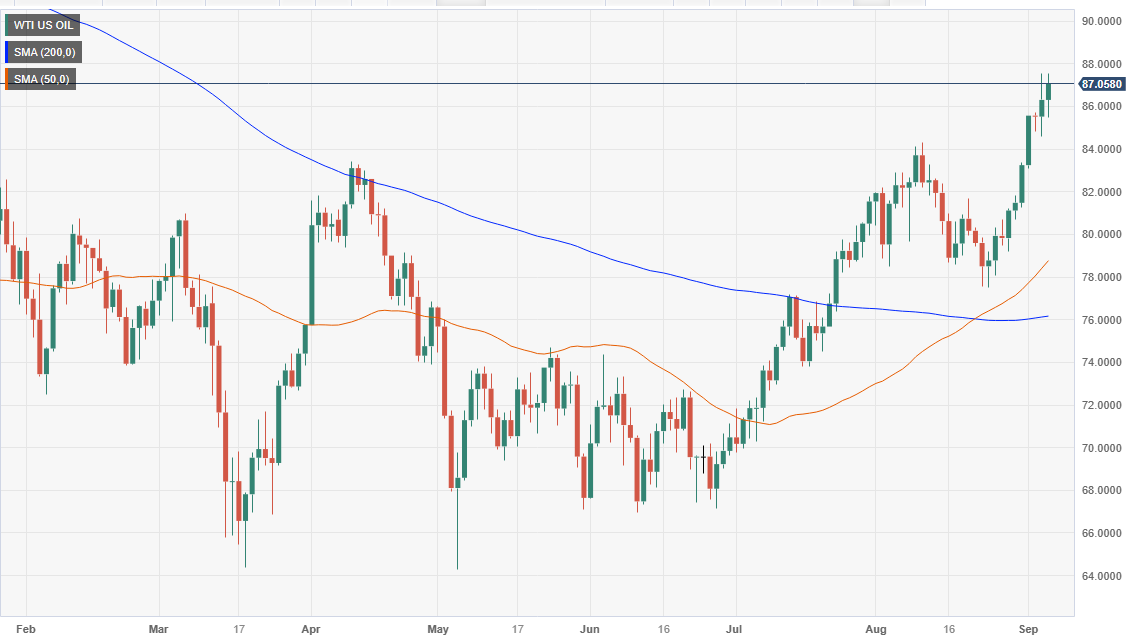WTI crude oil jumps 1% amid extended cuts by Saudi Arabia and Russia; US inventories eyed

- Saudi Arabia and Russia extended their crude oil production cuts, reducing supply by 1 million and 300K barrels, respectively.
- According to a Reuters poll, American Petroleum Institute (API) expected to report a draw of 2.1 billion barrels in US crude inventories for the week ending September 1.
- Strong US business activity data initially boosts the US Dollar, causing a pullback in WTI prices, before reversing course.
Western Texas Intermediate (WTI), the US crude oil benchmark, advanced some 1% on Wednesday due to further draws on US crude oil inventory, while Saudi Arabia and Russia extended their production cuts. WTI is trading at $87.15 after hitting a daily low of $85.49.
WTI advances to $87.15, eyeing the $90.00 mark as major oil producers prolong supply cuts
According to a Reuters poll, the American Petroleum Institute (API) is expected to deliver crude inventories, which analysts expect a drop of 2.1 billion barrels in the week to September 1.
The data comes one day after Russia and Saudi Arabia prolonged their crude output production cuts, with the former slashing 300K barrels of production, while Saudi Arabia’s reduced supply by 1 million. That exacerbated the WTI jump of more than 1%, as traders eye $90.00 a barrel.
Earlier data during the day spurred a pullback in WTI after the Institute for Supply Management (ISM) revealed that business activity in the services sector improved sharply, reaching 54.5, crushing estimates of 2.5. That sponsored a leg-up in the Greenback (USD), which pushed to ten-month highs above 105.000, before reversing its course, though it remains positive.
Oil analysts noted that prices would be upward pressured as US refineries enter their maintenance period. However, speculation that Iran, Venezuela, and Lybia could increase oil supply could cap the rise in WTI price.
WTI Price Analysis: Technical outlook
From a technical perspective, WTI is expected to extend its uptrend, with buyers eyeing the November 11 high of $90.08 per barrel. Also, the daily chart depicts a golden cross formed in late August and high oil prices trading at year-to-date (YTD) levels, which could exacerbate a push toward the latter. Nevertheless, buyers must conquer the $88.00 figure before challenging $90.00. Conversely, If WTI drops below the September 5 daily low of $85.07, that could pave the way for a deeper pullback.
